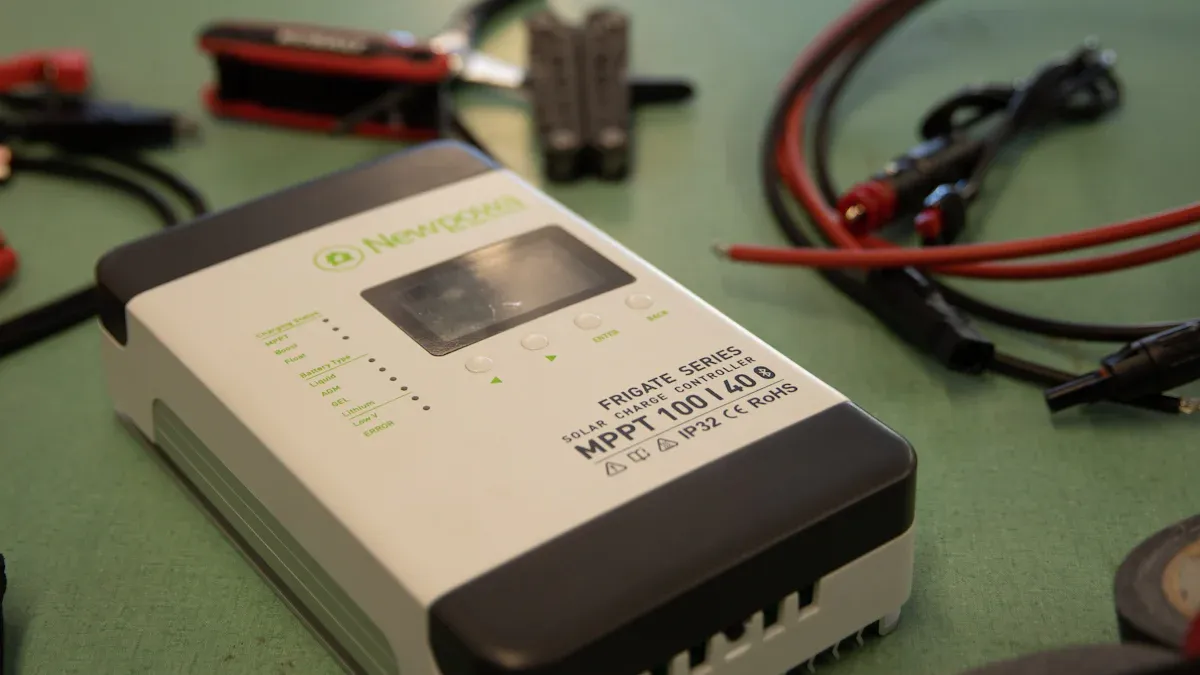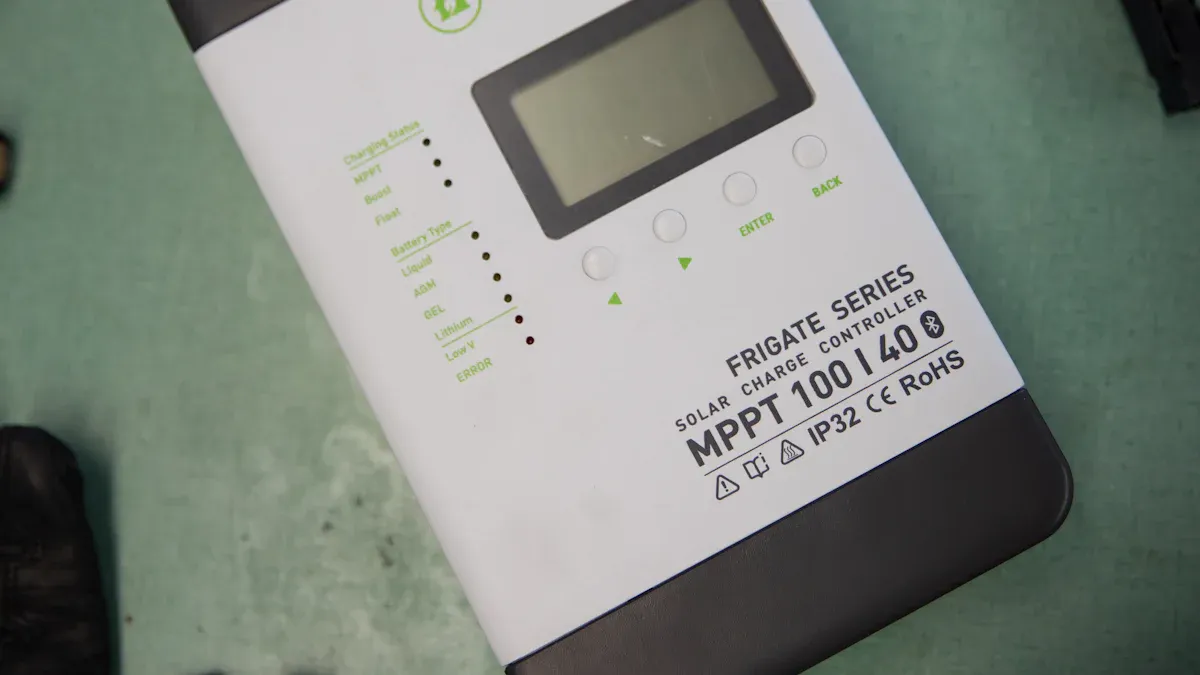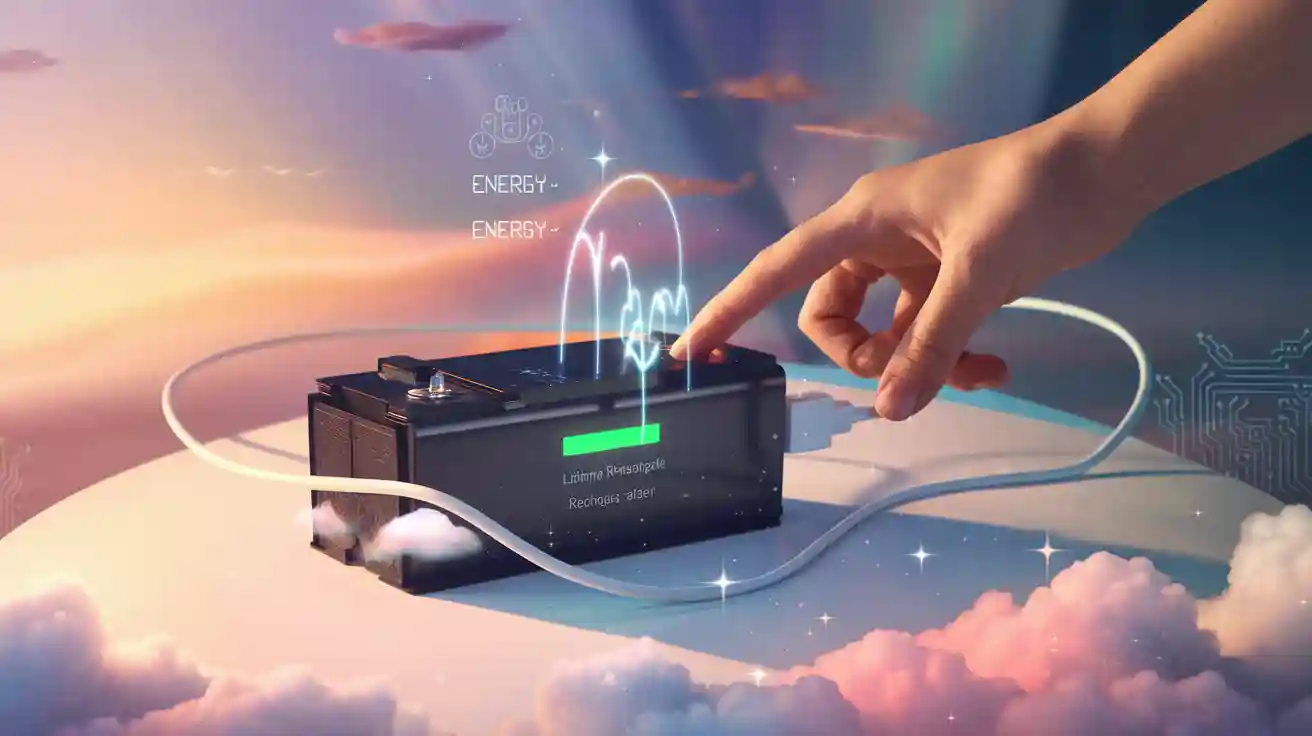How to charge Lithium Iron Phosphate Rechargeable Lithium Ion Batteries?
To charge lithium iron phosphate batteries safely, you must use a dedicated lifepo4 charger with the correct voltage and current settings. Always check that your rechargeable battery matches the charger’s specifications. Follow each charging step carefully to protect your battery and support its longevity. Charging in the right way prevents damage and keeps your battery performing well.
Key Takeaways
- Always use a dedicated LiFePO4 charger to prevent overheating and ensure safe charging.
- Set the charger to 3.65V per cell and use the CC/CV method for optimal battery performance.
- Monitor the charging process closely to avoid overheating and disconnect the charger once fully charged.
- Store your LiFePO4 battery at 40% to 60% charge to maintain its health and reduce self-discharge.
- Avoid mixing different battery types and charging in extreme temperatures to extend battery life.
Choosing a Charger for Lithium Iron Phosphate Batteries

When you charge a lifepo4 battery, you need to use a suitable charger made for this type of lithium ion battery. Chargers for lifepo4 batteries work differently from those for other li-ion battery chemistries. Using the wrong charger can cause overheating, shorten battery life, or even create safety risks. Always check that your charger matches the correct voltage and capacity for your battery.
LiFePO4 Battery Charger Types
You will find several types of lifepo4 chargers on the market. Some models, like the Optimate TM-281, TM-391, and TM-275, offer different voltage ranges and features for various applications. Many users also choose smart chargers such as the EP Charger Pro Series 12V 20A, Victron Blue Smart IP65, NOCO GENIUSPRO 25A, Renogy 12V 20A, and Battery Tender 12V 10A. These chargers provide advanced safety and charging controls for your lifepo4 battery.
Tip: Never mix different battery types when charging. Always use a lifepo4 charger for your lifepo4 battery.
| Feature | LiFePO4 Chargers | Other Lithium-Ion Chargers |
|---|---|---|
| Voltage Requirements | 3.65V per cell | Up to 4.2V per cell |
| Charging Algorithm | CC/CV with no float charging | May include float charging stages |
| Protection Circuitry | Requires specific safeguards for LiFePO4 | General safeguards, may not be specific |
Voltage and Current Settings
You must set the charger to the correct voltage and current for your lifepo4 battery. Most lifepo4 batteries charge at 3.65V per cell. For a 100Ah battery, balanced charging uses 10A to 20A, while trickle charging uses 1A to 5A. The charger should support the CC/CV (Constant Current/Constant Voltage) method. This method starts with a steady current and then holds the voltage at 3.65V per cell as the current drops.
| Charging Method | Current Range (for 100Ah) | Voltage Setting (per cell) |
|---|---|---|
| Balanced Charging | 10A (0.1C) to 20A (0.2C) | 3.65V |
| Trickle Charging | 1A (0.01C) to 5A (0.05C) | 3.65V |
- CC/CV charging prevents overcharging and reduces heat, which helps your battery last longer.
Key Features
Look for these features in your lifepo4 charger:
- Support for the CC/CV charging method.
- Accurate voltage and current controls.
- Built-in safety protections for temperature (0°C to 45°C).
- Compatibility with your battery’s BMS (Battery Management System).
If you use a charger not designed for lifepo4, you risk overheating, battery failure, or even fire. Using the wrong charger can also void your warranty and cause poor performance. Always use a suitable charger to protect your lithium ion battery and ensure safe charging.
How to Charge Lithium Iron Phosphate Batteries

Charging lithium iron phosphate batteries requires careful attention to detail and the right charging methods. You need to follow each step to keep your battery safe and extend its life. Here’s how you can charge lithium iron phosphate batteries correctly.
Preparing to Charge
Before you start charging lithium iron phosphate batteries, you must check a few important things:
- Make sure your lifepo4 battery matches the voltage and capacity needed for your device or application.
- Always use a dedicated lifepo4 charger. This charger is designed for the unique needs of a lifepo4 battery and will help prevent damage.
- Inspect the battery for any signs of damage or swelling. Do not charge if you see any problems.
- Wear safety glasses and insulated gloves. Keep a fire extinguisher nearby for extra safety.
- Set the charger to the correct voltage and current. For most lifepo4 batteries, set the voltage to 3.65V per cell and the current to 0.3C (where C is the battery’s capacity in amp-hours).
Tip: Never mix different types of batteries when charging. Only charge lithium iron phosphate batteries with the correct charger.
Charging a LiFePO4 Battery Safely
You should follow these steps to charge lithium iron phosphate batteries safely:
- Connect the charger’s positive and negative terminals to the matching terminals on your lifepo4 battery.
- Double-check that the charger settings match your battery’s voltage and current requirements.
- Plug the charger into the power source (AC or DC, depending on your charger).
- Turn on the charger to begin charging.
- Use the constant current constant voltage (CCCV) charging method. The charger will first supply a steady current (constant current) until the battery voltage reaches 3.65V per cell. Then, it will switch to constant voltage, holding at 3.65V per cell while the current gradually drops.
| Stage | Description |
|---|---|
| Constant Current | Charge at 0.3C until voltage reaches 3.65V |
| Constant Voltage | Maintain at 3.65V until current drops below 0.1C |
| Stop Charging | When current is below 0.1C (or 0.05C) |
Note: The constant current constant voltage method is the safest and most effective way to charge lithium iron phosphate batteries. It helps prevent overcharging and reduces heat buildup.
Monitoring the Process
You need to monitor the charging process to ensure safety and battery health. Use a multimeter or battery monitor to check voltage, current, and temperature during charging. Watch for any unusual signs, such as overheating or swelling. If you notice anything abnormal, stop charging immediately.
- Always keep an eye on the battery as it charges.
- Make sure the temperature stays within the safe range (0°C to 45°C).
- Avoid leaving the battery unattended during charging.
Alert: Prolonging the high-voltage stage can cause irreversible capacity loss, increase the risk of thermal runaway, and damage the battery’s internal structure. Disconnect the charger as soon as the battery is fully charged.
When Charging Is Complete
You will know charging is complete when the battery reaches the voltage threshold and the current drops to about 3% of the rated current. The current will level off and stop decreasing. At this point, disconnect the charger to prevent overcharging, which can cause permanent damage.
| Indicator | Description |
|---|---|
| Voltage Threshold | Battery reaches the set voltage (3.65V per cell) |
| Current Drop | Current falls to about 3% of the rated current |
| Current Leveling Off | Current stops decreasing, indicating full charge |
| Prevention of Over-Charging | Disconnect charger to avoid damage |
Tip: Always disconnect the charger promptly after charging lithium iron phosphate batteries. Overcharging can lead to instability and reduce the battery’s cycle life.
By following these steps and using the correct charging methods, you can safely charge lithium iron phosphate batteries and keep your lifepo4 battery performing at its best. Remember, proper charging protects your investment and ensures your lithium ion battery lasts as long as possible.
Safety Tips for Charging Lithium Iron Phosphate Batteries
Temperature Guidelines
You need to pay close attention to temperature when you charge lithium iron phosphate batteries. Lifepo4 batteries work best within a specific temperature range. Charging outside this range can cause problems like reduced efficiency, battery damage, or even safety hazards such as leakage or explosions.
| Category | Temperature Range |
|---|---|
| Charging Temperature | 0°C ~ 55°C |
| Discharge Temperature | -20°C ~ 55°C |
| Storage Temperature | 0°C ~ 35°C |
Charging lifepo4 batteries below 0°C can lower energy density and increase internal resistance. The battery may not accept a charge, and you risk permanent capacity loss. Charging above 45°C can shorten the battery’s lifespan. Always use a charger that supports temperature monitoring to keep the battery safe.
Tip: Keep the charging area between 5°C and 45°C for the best results. Avoid charging in extreme cold or heat.
Preventing Overcharge
Overcharging lifepo4 batteries can lead to overheating, swelling, or even fire. You should always use a lifepo4 charger designed for these batteries. The charger must have a proper charge profile and support the CC/CV method. A high-quality Battery Management System (BMS) will help prevent overcharging and overdischarging by cutting off current when the battery reaches its limit.
To prevent overcharging, follow these steps:
- Choose a charger made for lifepo4 batteries.
- Set the charger to a maximum float voltage of 3.40–3.45V per cell.
- Monitor voltage and temperature during charging with a voltmeter or app.
- Use the BMS to enforce the discharge safety limit and stop charging at full capacity.
Alert: Never leave your battery unattended while charging. Always disconnect the charger once charging is complete.
Safe Charging Environment
A safe environment helps protect your lifepo4 battery and your home. Always charge lithium iron phosphate batteries in a dry, well-ventilated area. Avoid direct sunlight and keep the battery away from flammable materials. Place the charger and battery on a stable, non-conductive surface.
- Use a lithium-specific charger with smart charging logic.
- Charge at a moderate rate, such as C/4 to C/2, for balanced performance.
- Store the battery at about 50% charge if you do not plan to use it soon.
Note: Regularly inspect your charger and battery for damage. Certified batteries with UL, CE, or IEC marks offer extra peace of mind.
By following these safety tips, you can charge lithium iron phosphate batteries with confidence. You will prevent overcharging and overdischarging, protect your investment, and extend the life of your lifepo4 battery.
Maintaining Your LiFePO4 Battery
Storage and Self-Discharge
Proper storage helps you get the most out of your lifepo4 battery. When you store lithium iron phosphate batteries, always keep them at a partial charge. Aim for 40% to 60% charge before storage. This level reduces stress on the battery and slows down self-discharge. Lifepo4 batteries have a low self-discharge rate, usually about 1-3% per month. If you store a fully charged battery, it will still hold about 97% to 99% of its charge after one month.
Tip: Store your lifepo4 battery in a cool, dry place. Keep the temperature between 15°C and 25°C. Avoid extreme cold or heat, as both can damage the battery and increase self-discharge.
You should also avoid high humidity. Moisture can cause chemical reactions that harm the battery. Always use a charger made for lifepo4 batteries to top up the charge if needed.
Charging Frequency
You need to check your lifepo4 battery’s charge level during storage. If you plan to store it for a long time, keep it at 50% to 60% charge. Do not leave it fully charged or fully discharged for months. Every six months, charge the battery to 100%. This step helps balance the cells and keeps the battery healthy. If you forget to recharge, the battery may lose capacity or even stop working.
- Charge to 100% every six months during storage.
- For shorter storage, keep the battery at 50% to 60% charge.
- Avoid storing at 100% for more than two or three months.
Note: Regular charging and discharging cycles help maintain the battery’s performance. Always use a lifepo4 charger for this process.
Common Mistakes
Many users make mistakes when maintaining lifepo4 batteries. You can avoid these errors by following best practices:
- Mixing batteries of different chemistries, ages, or capacities can cause overheating and loss of capacity.
- Ignoring temperature extremes leads to faster battery degradation. High heat speeds up aging, while cold can cause permanent damage.
- Poor storage, such as placing the battery in a damp or hot area, increases the risk of physical damage and fire.
- Storing the battery fully charged or completely discharged shortens its lifespan. Always aim for a partial charge.
| Mistake | Impact on Battery |
|---|---|
| Mixing battery types | Overheating, capacity loss |
| Ignoring temperature | Degradation, permanent damage |
| Poor storage conditions | Physical damage, fire risk |
| Full/discharged storage state | Shortened lifespan |
⚠️ Always monitor the battery’s charge and storage environment. Use the correct charger and avoid deep discharges or overcharging.
By following these steps, you can extend the life of your lifepo4 battery. Proper charging, careful discharging, and smart storage will help you get the best performance from your lithium iron phosphate batteries.
When you charge lithium iron phosphate batteries, always use a charger designed for this chemistry. This prevents overcharging, overheating, and poor battery performance. Charging at the right voltage and current keeps your battery stable and safe. Regular maintenance, such as monitoring temperature and avoiding rapid charging, helps extend battery life. If you have questions about charging or want to discuss cooperation, feel free to reach out through our website.
FAQ
How do you know if your LiFePO4 battery is fully charged?
You can check the voltage. When each cell reaches 3.65V and the charging current drops below 0.05C, your battery is fully charged. Most smart chargers show a green light or display a "Full" message.
Can you use a regular lithium-ion charger for LiFePO4 batteries?
No, you should not use a regular lithium-ion charger. LiFePO4 batteries need a charger with the correct voltage and charging profile. Using the wrong charger can damage your battery or cause safety issues.
What should you do if your LiFePO4 battery gets hot during charging?
Stop charging immediately. Move the battery to a cool, ventilated area. Check for damage or swelling. If you need help, contact our support team for advice before using the battery again.
How often should you charge your LiFePO4 battery during storage?
Charge your battery to 100% every six months. Keep it at 50% to 60% charge for shorter storage periods. This practice helps maintain battery health and prevents capacity loss.
Where can you get more help or partnership information about lithium battery charging?
Visit our website for detailed guides and expert support. You can also reach out to us for partnership opportunities or specific questions about lithium battery charging.
-

 May.2025.11.24Ternary Lithium Battery vs Lithium-ion: Complete Comparison Guide (2025 Edition)Learn More
May.2025.11.24Ternary Lithium Battery vs Lithium-ion: Complete Comparison Guide (2025 Edition)Learn More -

 May.2025.11.214S2P 18650 14.8V Battery: Complete Technical Guide, Specs, Applications & SafetyLearn More
May.2025.11.214S2P 18650 14.8V Battery: Complete Technical Guide, Specs, Applications & SafetyLearn More -

 May.2025.11.18PCM vs BMS in Lithium Batteries: What’s the Difference and Which One Do You Need?Learn More
May.2025.11.18PCM vs BMS in Lithium Batteries: What’s the Difference and Which One Do You Need?Learn More -

 May.2025.11.17Custom Li-ion Battery Design for Medical Devices (2025 Comprehensive Guide)Learn More
May.2025.11.17Custom Li-ion Battery Design for Medical Devices (2025 Comprehensive Guide)Learn More -

 May.2025.11.17The Future of Lithium-Ion Batteries: Innovation, Sustainability, and Global Market TrendsLearn More
May.2025.11.17The Future of Lithium-Ion Batteries: Innovation, Sustainability, and Global Market TrendsLearn More
















